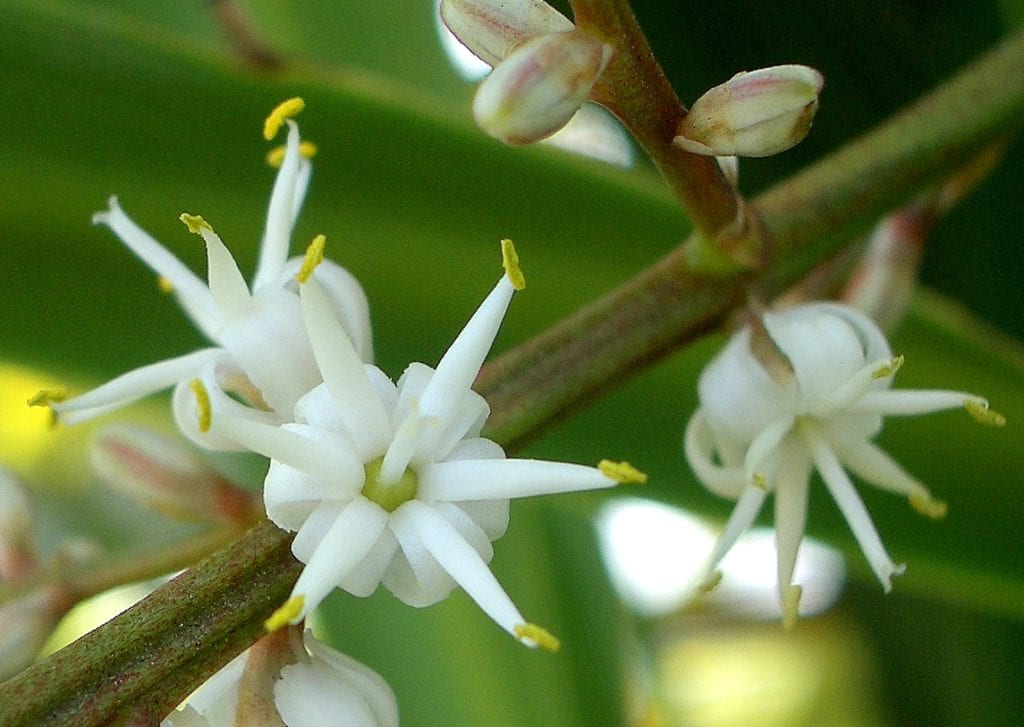
El Cordyline australis, better known by the names Cabbage tree or simply Cordiline, is a fast-growing native New Zealand plant that requires little maintenance. It supports high temperatures very well, and also drought, so it can be planted in gardens with low, no, very low maintenance 😉.
In addition, it resists well to freezes down to -3ºC, which makes it one of the preferred Cordylines for temperate climates.
Cordyline australis characteristics

Our protagonist is a plant that grows like a tree, being able to reach up to 5 meters high in habitat (in gardens it does not usually exceed 4m), with a trunk up to 1m in diameter. It belongs to the botanical family Agavaceae. Green or purple ribbed leaves sprout from its stems, which are about 70cm long and about 4cm wide. Its flowers, which sprout in summer, are grouped in creamy-white panicular inflorescences. And the fruit is a globose, white berry when ripe.
There are several very interesting hybrids, such as:
- doucetty: leaves with a white stripe and pink edges.
- Purpurea: purple leaves.
- Torbay sunset: green leaves and red stems.
- Atropurpurea: leaves whose base is purple.
How do you take care of yourself?

El Cordyline australis It is a very easy to grow and maintain plant that can grow even in the poorest soils. Even so, so that no problem arises, here is your care guide:
- Location: full sun. If you have it indoors, it must be in a room where a lot of natural light enters.
- Transplant: whether you want to move to a larger pot or to the garden, it must be done in spring or early summer.
- Pruning: it is not pruned, but it is recommended to remove the dry leaves.
- Irrigation: scarce. During the warm months it should be watered once a week, and the rest of the year every 15 or 20 days.
- Reproduction: it can be reproduced by seeds sown directly in pots with substrates that have good drainage, such as peat and perlite in equal parts, or by cuttings during spring or summer.
- Plagues and diseases: it is very resistant to both. You may have a cottony mealybug, which is easily removed with a cotton swab dipped in water, but this is not common.
Go ahead and have a Cordyline australis 😉.
Hello, my name is Mercedes, I have a purple cordyline, and it has lost all the leaves.
I had a grasshopper that was eating it, I removed it, then the leaves began to dry. I've had it for several years, and I don't know if it will sprout again
Hello Mercedes.
You can help him by watering it twice a week with water with homemade rooting hormones (here explains how to obtain them).
Anyway, if in two months it does not take leaves, unfortunately there will be nothing to do. 🙁
A greeting.
Hi, I have some cordyline red Star and the leaves are turning green and then brown on different sides. What could it be?
Hi Cesar.
It may be that it lacks light (not direct sun). If you have it in the shade, I recommend moving it around.
And if it is not that, please write to us again and we will tell you.
A greeting.
I have purple cordyline, what do you recommend I do? Leave it in a pot or put it on the ground in the garden and put it directly in the sun or in half shade
Where should I plant a purple chondryline what place
Hi Edwin.
You can put it in semi-shade, it will do well there if the weather is warm.
A greeting.